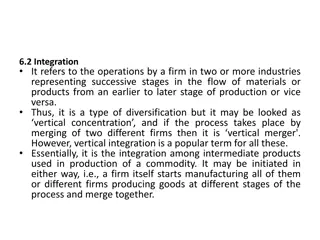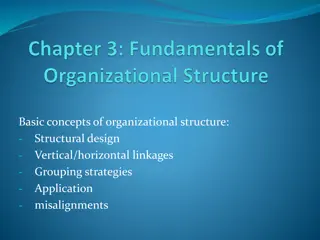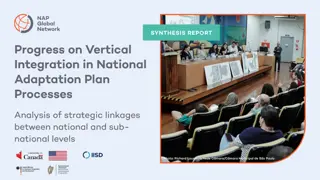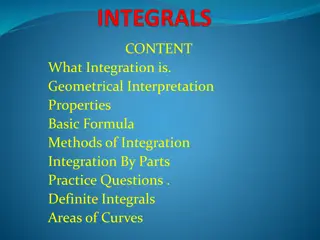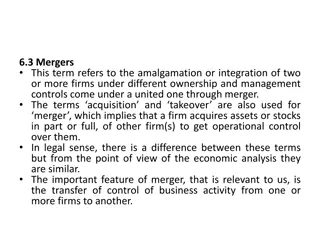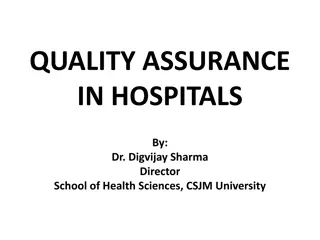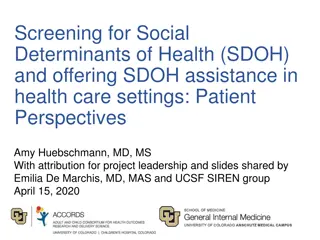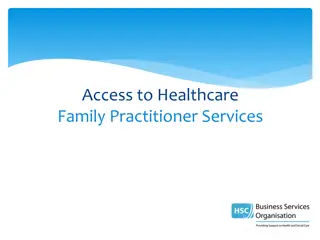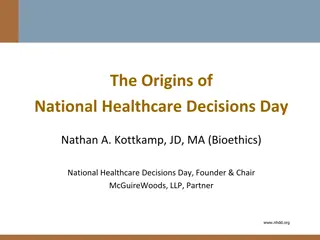Evaluating Vertical Integration in Healthcare: Risks and Benefits
Advising on proposed legislation in Virginia regulating vertically integrated entities owning hospitals and insurance companies. Analyzed data on quality, access, and cost to assess concerns and impacts of vertical integration. Research findings show higher costs with unclear quality benefits in integrated systems compared to non-integrated competitors.
Uploaded on Sep 13, 2024 | 0 Views
Download Presentation

Please find below an Image/Link to download the presentation.
The content on the website is provided AS IS for your information and personal use only. It may not be sold, licensed, or shared on other websites without obtaining consent from the author. Download presentation by click this link. If you encounter any issues during the download, it is possible that the publisher has removed the file from their server.
E N D
Presentation Transcript
IS BIGGER ALWAYS BETTER? Vertical Integration in Healthcare: Community Risks and Benefits Health Insurance Reform Commission August 31, 2021 Paul Harkaway, M.D. Bruce Solomon, M.B.A., M.P.H.
PURPOSE To advise on proposed legislation in the Commonwealth of Virginia that would regulate vertically integrated entities owning both a hospital and a health insurance company Our True North in evaluating the benefit to the community is the Triple Aim: Improved Quality Enhanced Access Decreased Cost 2
METHODOLOGY Analyzed 47 peer-reviewed publications and state and federal testimony Reviewed publicly available data from Virginia Health Information, CMS, and Leapfrog on quality and cost Reviewed relevant legal filings from multiple states 3
WHAT IS VERTICAL INTEGRATION? One entity provides goods or services at multiple levels in the chain of distribution, such as Netflix producing content and then providing streaming services Vertical integration in healthcare often involves combining hospital, physician, and health insurance services in one entity Proposed legislation addresses vertical integration between a hospital and a health insurance carrier 4
WHY IS VERTICAL INTEGRATION A CONCERN? Vertically integrated entities can and do use control of their insurance networks to exclude or disadvantage provider competitors Gap in Any Willing Provider law permits exclusion of lower- cost ambulatory facilities Any Willing Provider law does not address modern tiering and steering of networks Impact on care access and consumer costs especially those with high-deductible health plans Lawsuits in Florida and Pennsylvania against vertically integrated entities show these risks are not theoretical 5
RESEARCH FINDINGS AND CONCLUSIONS Nationwide research consistently shows that vertical integration leads to higher costs without clear quality benefit As an example, in Hampton Roads, vertically integrated Sentara/Optima performs same or worse on quality/access/cost as non-integrated competing hospitals and insurers 6
RECOMMENDATIONS Risk of abuse, other states experiences, rapidly evolving markets, and lack of clear community benefit leads to conclusion that vertically integrated entities should be regulated to protect consumers To expand current Any Willing Provider statute to ensure equal opportunity to participate in VICs networks, subject to objective requirements of quality, cost, and access Prohibit an officer/director of a VIC from simultaneously serving as an officer/director of an affiliated healthcare provider Separate Boards for hospital and insurance carrier entities with additional suggestion of community representation 7


